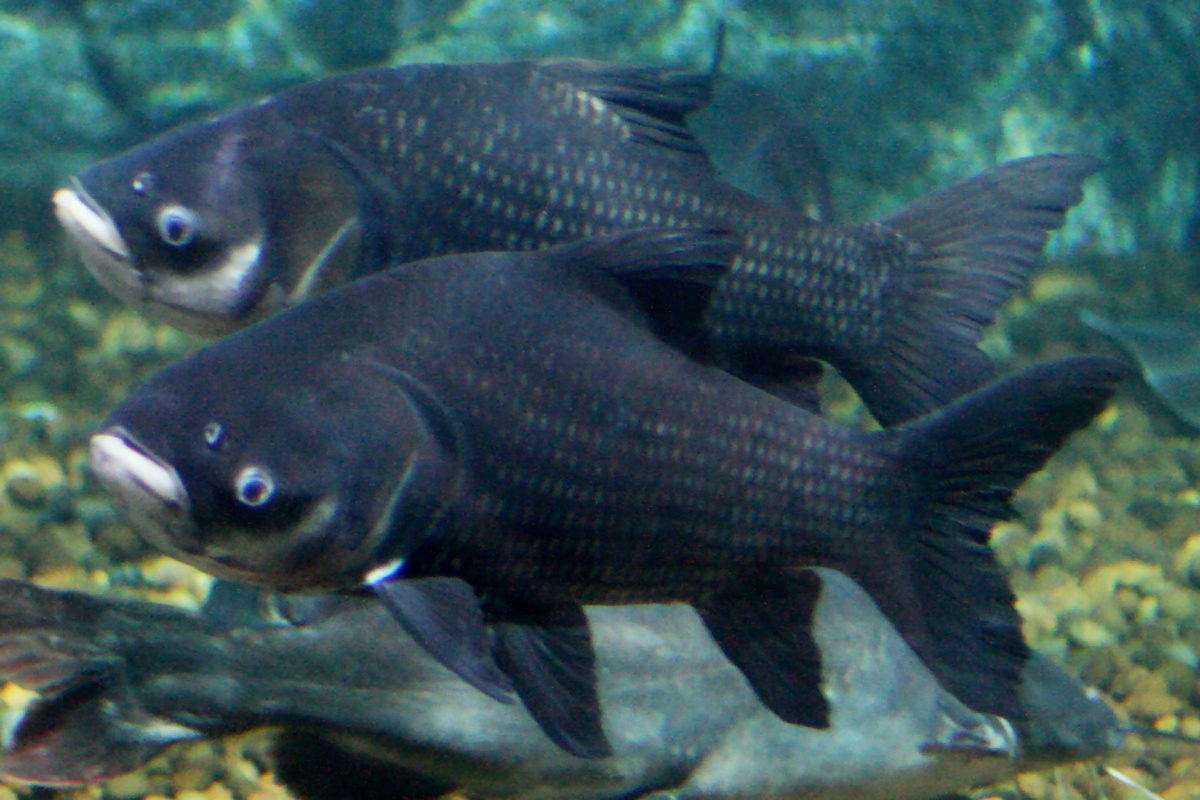|
Ptychobarbus
''Ptychobarbus'' is a genus of cyprinid fish that is found in rivers, streams and lakes in the Himalayas and Tibetan Plateau of China, India, Nepal and Pakistan, extending into the highlands of Afghanistan. They reach up to in weight and about in total length. They mostly feed on benthic invertebrates, but will also take planktonic organisms, aquatic plants and algae.Qi, D.; Y. Chao; S. Guo; L. Zhao; T. Li; F. Wei; and X. Zhao (2012). Convergent, Parallel and Correlated Evolution of Trophic Morphologies in the Subfamily Schizothoracinae from the Qinghai-Tibetan Plateau. PLoS ONE 7(3): e34070. ''Ptychobarbus'' is a part of the schizothoracines (snowtrout and allies), which also includes the genera '' Aspiorhynchus'', '' Chuanchia'', ''Diptychus'', '' Gymnodiptychus'', '' Gymnocypris'', '' Oxygymnocypris'', '' Platypharodon'', ''Schizopyge'', ''Schizopygopsis'' and ''Schizothorax''. Species There are currently four described species in the genus: * ''Ptychobarbus chungtienen ... [...More Info...] [...Related Items...] OR: [Wikipedia] [Google] [Baidu] |
Ptychobarbus Dipogon
''Ptychobarbus dipogon'' is a species of cyprinid of the genus '' Ptychobarbus''. It inhabits Tibet, China China, officially the People's Republic of China (PRC), is a country in East Asia. It is the world's most populous country, with a population exceeding 1.4 billion, slightly ahead of India. China spans the equivalent of five time zones and ..., and has a maximum length of and a maximum published weight of . It is used for food locally and is considered harmless to humans. It has been assessed as "least concern" on the IUCN Red List. References Cyprinid fish of Asia Freshwater fish of China IUCN Red List least concern species {{Cyprinidae-stub ... [...More Info...] [...Related Items...] OR: [Wikipedia] [Google] [Baidu] |
Ptychobarbus Conirostris
''Ptychobarbus conirostris'' (common name: Indus snowtrout) is a species of cyprinid of the genus '' Ptychobarbus''. It inhabits India, Pakistan and Tibet in mountain streams and rivers. It is considered harmless to humans. References Cyprinid fish of Asia Freshwater fish of China Freshwater fish of India Fish of Pakistan {{Cyprinidae-stub ... [...More Info...] [...Related Items...] OR: [Wikipedia] [Google] [Baidu] |
Ptychobarbus Kaznakovi
''Ptychobarbus kaznakovi'' is a species of cyprinid fish endemic to Tibet. Footnotes * Freshwater fish of China Cyprinid fish of Asia Fish described in 1903 Taxa named by Alexander Nikolsky {{Cyprinidae-stub ... [...More Info...] [...Related Items...] OR: [Wikipedia] [Google] [Baidu] |
Ptychobarbus Chungtienensis
''Ptychobarbus chungtienensis'' is a species of cyprinid fish endemic to China. It is so far only known from Zhongdian in Yunnan. References * Cyprinid fish of Asia Freshwater fish of China Fish described in 1964 {{Cyprinidae-stub ... [...More Info...] [...Related Items...] OR: [Wikipedia] [Google] [Baidu] |
Cyprinid Fish Of Asia
Cyprinidae is a family of freshwater fish commonly called the carp or minnow family. It includes the carps, the true minnows, and relatives like the barbs and barbels. Cyprinidae is the largest and most diverse fish family and the largest vertebrate animal family in general with about 3,000 species, of which only 1,270 remain extant, divided into about 370 genera. Cyprinids range from about 12 mm in size to the giant barb (''Catlocarpio siamensis''). By genus and species count, the family makes up more than two-thirds of the ostariophysian order Cypriniformes. The family name is derived from the Greek word ( 'carp'). Biology and ecology Cyprinids are stomachless fish with toothless jaws. Even so, food can be effectively chewed by the gill rakers of the specialized last gill bow. These pharyngeal teeth allow the fish to make chewing motions against a chewing plate formed by a bony process of the skull. The pharyngeal teeth are unique to each species and are used ... [...More Info...] [...Related Items...] OR: [Wikipedia] [Google] [Baidu] |
Schizothorax
''Schizothorax'' is a genus of cyprinid fish found in southern and western China, through northern South Asia ( Himalaya) and Central Asia, to Iran, with a single species, ''S. prophylax'', in Turkey.Yang, J.; J.X. Yang; and X.Y. Chen (2012). A re-examination of the molecular phylogeny and biogeography of the genus Schizothorax (Teleostei: Cyprinidae) through enhanced sampling, with emphasis on the species in the Yunnan–Guizhou Plateau, China. Journal of Zoological Systematics and Evolutionary Research 50(3). They are primarily found in highland rivers, streams and lakes, although a few species occur in lower-lying locations, like Lake Balkhash and lakes of the Sistan Basin.Coad, B.; and J. Hales (2008)Helmand - Sistan.Freshwater Ecoregions of the World. Retrieved 18 May 2019. Their scientific name means "cloven-breast", from Ancient Greek () 'to cleave' and () 'breast-plate' (see also thorax). The western species are typically referred to as ''marinkas'' from their Russ ... [...More Info...] [...Related Items...] OR: [Wikipedia] [Google] [Baidu] |
Schizopygopsis
''Schizopygopsis'' is a genus of cyprinid fish. Most species are endemic to river basins in the Himalayas and Qinghai–Tibet Plateau of China, but ''S. stoliczkai'' extends into the highlands of Afghanistan, Iran, northern India, Kyrgyzstan, Pakistan and Tajikistan.Delin Qi, Songchang Guo, Yan Chao, Qinghui Kong, Changzhong Li, Mingzhe Xia,Baosheng Xie and Kai Zhao (2015). The biogeography and phylogeny of schizothoracine fishes (Schizopygopsis) in the Qinghai-Tibetan Plateau. Zoologica Scripta 44(5). ''S. younghusbandi'' is up to almost in total length, but the remaining species generally only reach about two-thirds of that size. Similar to '' Platypharodon'', ''Schizopygopsis'' have a horny sheath on the lower jaw and spoon-shaped teeth that they use to scrape off periphyton and algae from stones, but they will also eat benthic invertebrates.Tang, Y.; C. Li; K. Wanghe; C. Feng; C. Tong; F. Tian; and K. Zhao (2019). Convergent evolution misled taxonomy in schizothoracine f ... [...More Info...] [...Related Items...] OR: [Wikipedia] [Google] [Baidu] |
Chuanchia
''Chuanchia labiosa'' is a species of cyprinid fish that is only found in the upper reaches of the Yellow River basin in the Qinghai–Tibet Plateau of China, where it mostly inhabits slow-flowing cold waters at altitudes above . It is the only member of its genus, but is related to other schizothoracines (snowtrout and allies) like '' Aspiorhynchus'', ''Diptychus'', ''Gymnodiptychus'', '' Gymnocypris'', '' Oxygymnocypris'', '' Platypharodon'', ''Ptychobarbus'', ''Schizopyge'', ''Schizopygopsis'' and ''Schizothorax''.Tang, Y.; C. Li; K. Wanghe; C. Feng; C. Tong; F. Tian; and K. Zhao (2019). Convergent evolution misled taxonomy in schizothoracine fishes (Cypriniformes: Cyprinidae). Molecular Phylogenetics and Evolution 134: 323–337 Qi, D.; Y. Chao; Y. Zhao; M. Xia; and R. Wu (2018). Molecular evolution of myoglobin in the Tibetan Plateau endemic schizothoracine fish (Cyprinidae, Teleostei) and tissue-specific expression changes under hypoxia. Fish Physiology and Biochemistry 4 ... [...More Info...] [...Related Items...] OR: [Wikipedia] [Google] [Baidu] |
Diptychus
''Diptychus'' is a genus of cyprinid freshwater fish, consisting of two species found in Himalaya and the Tibetan Plateau of China, India, Nepal and Pakistan, ranging west to the Tien Shan Mountains and Central Asia.Li, G.; Y. Tang; R. Zhang; and K. Zhao (2016). Phylogeography of Diptychus maculatus (Cyprinidae) endemic to the northern margin of the QTP and Tien Shan region. BMC Evolutionary Biology 16(1). The type species is the scaly osman, ''Diptychus maculatus''. The name is derived from the Greek word ''di'', meaning "two", and the Greek word , meaning "fold". ''Diptychus'' is up to in total length. ''Diptychus'' is a part of the schizothoracines (snowtrout and allies), which also includes the genera '' Aspiorhynchus'', '' Chuanchia'', '' Gymnodiptychus'', '' Gymnocypris'', '' Oxygymnocypris'', '' Platypharodon'', '' Ptychobarbus'', ''Schizopyge'', '' Schizopygopsis'' and ''Schizothorax ''Schizothorax'' is a genus of cyprinid fish found in southern and western China ... [...More Info...] [...Related Items...] OR: [Wikipedia] [Google] [Baidu] |
Oxygymnocypris
''Oxygymnocypris stewartii'' is a species of cyprinid fish endemic to Tibet and occurs in the Yarlung Tsangpo River (=upper Brahmaputra) and its tributaries at altitudes above in the Qinghai-Tibet Plateau. It is the only species in its genus. Life history and ecology ''Oxygymnocypris stewartii'' grows to in standard length, in total length and in weight. It is a long-lived (to 25 years), late-maturing species that reproduces annually. ''Oxygymnocypris stewartii'' inhabits the deeper areas of clear, fast-flowing rivers with a rocky substrate. It is a generalized and opportunistic predator feeding both on fish and aquatic insects. Smaller specimens feed mostly on cobitid nemacheilid loaches and caddisflies of family Hydropsychidae, whereas larger individuals switch more towards cyprinid fishes and chironomid The Chironomidae (informally known as chironomids, nonbiting midges, or lake flies) comprise a family of nematoceran flies with a global distribution. They are clo ... [...More Info...] [...Related Items...] OR: [Wikipedia] [Google] [Baidu] |
Alexander Mikhailovich Nikolsky
Alexander Mikhailovich Nikolsky (Russian: Александр Михайлович Никольский; February 18, 1858 – December 8, 1942) was a Russian and Ukrainian zoologist born in Astrakhan. From 1877 to 1881, he studied at the University of St. Petersburg, earning his doctorate several years later in 1887. From 1881 to 1891, he took part in numerous expeditions to Siberia, the Caucasus, Persia, Japan, et al. In 1887 he became an associate professor in St. Petersburg, later becoming director of the herpetology department at the Zoological Museum of the Academy of Sciences (1895). In 1903 he relocated as a professor to the Kharkiv University. In 1919 he was elected a member at the Academy of Sciences of Ukraine. Among his written works were ''Herpetologia Caucasica'' (1913), and volumes on reptiles and amphibians that were part of the series "Fauna of Russia and Adjacent Countries". He is the taxonomic authority of 26 reptile species. The viper '' Vipera nikolski ... [...More Info...] [...Related Items...] OR: [Wikipedia] [Google] [Baidu] |


